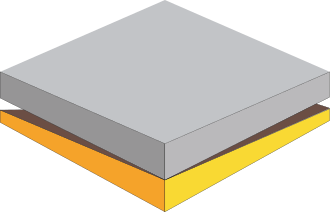Survey Setup¶
A geophysical survey is a data set measured and recorded with reference to a particular area of the Earth’s surface 1. Survey is the basic management unit for projects in pyGeoPressure. It holds both survey geometry and references to seismic and well data associated with the survey area.
In pyGeoPressure, a Survey object is initialized with a survey folder:
import pygeopressure as ppp
survey = ppp.Survey('path/to/survey/folder')
So to setup a survey is to build the survey folder.
Survey Folder Structure¶
In pyGeoPressure, all information and data are stored in a survey folder with the following structure:
+---EXAMPLE_SURVEY
| .survey
| |
| +---Seismics
| | velocity.seis
| | density.seis
| | pressure.seis
| |
| +---Surfaces
| | T20.hor
| | T16.hor
| |
| \---Wellinfo
| .CUG1
| .CUG2
| well_data.h5
|
Within the survey directory named EXAMPLE_SURVEY, there are three
sub-folders Seismics, Surfaces and Wellinfo. At the root of the
survey folder is a survey definition file .survey. The definition file defines
the geometry of the survey, the folder structure defines its association with the data.
.survey¶
First and foremost, there is a .survey file, which stores geometry definition of the
whole geophysical survey and auxiliary information.
Geometry Definition¶
Survey Geometry defines:
Survey Area extent
Inline/Crossline Coordinates, along which the survey are conducted.
X/Y Coordinates, real world Coordinates
Relations between them
In pyGeoPressure, survey geometry is defined using a method I personally dubbed “Three points” method. Given the inline/crossline number and X/Y coordinates of three points on the survey grid, we are able to solve the linear equaions for transformation between inline/crossline coordination and X/Y coordination.
Information in .survey file of the example survey are
{
"name": "CUG_depth",
"point_A": [6400, 4100, 701319, 3274887],
"point_B": [6400, 4180, 702185, 3274387],
"point_C": [6440, 4180, 702685, 3275253],
"inline_range": [6400, 7000, 20],
"crline_range": [4100, 6020, 40],
"z_range": [0, 5000, 4, "m"]
}
Of the three points selected, point A and point B share the same inline, and point B and point C share the same crossline.
In addition to coordinations of three points, the extent and step of inline, crossline ,z coordinates and unit of z are also needed to fully define the extent of the survey.
Seismics¶
Within Seismics folder, each file written in JSON with extention .seis represents a seismic data cube.
These files contain file path to the actual SEG-Y file storing seismic data,
and the type of property (Property_Type) and wether data is in depth scale
or not (inDepth). So the Seismics folder doesn’t need to store
large SEG-Y files, it just holds references to them.
In-line/cross-line range and Z range are also written in these files.
Surfaces¶
Surfaces like seimic horizons are stored in Surfaces folder. Surface
files ending with .hor are tsv files storing inline number, crossline number
and depth values defining the geometry of a 3D geologic surface.
Wellinfo¶
Well information is stored in Wellinfo. Each file with file name with
extention .well is a well information file, it stores well position information
like coordination, kelly bushing and interpretation information like interpretated
layers, fitted coefficients. It also holds a pointer to where the log curve data is
stored. By default, well log curve data are stored in well_data.h5, but
users can point to other storage files.
Create New Survey¶
A helper function create_survey_directory can facilitate users to build survey folder structure:
import pygeopressure as ppp
ppp.create_survey_directory(ROOTDIR, SURVEY_NAME)
It will create a survey folder named SURVEY_NAME in ROOTDIR
with three sub-folders for each kind of data and a .survey file.
